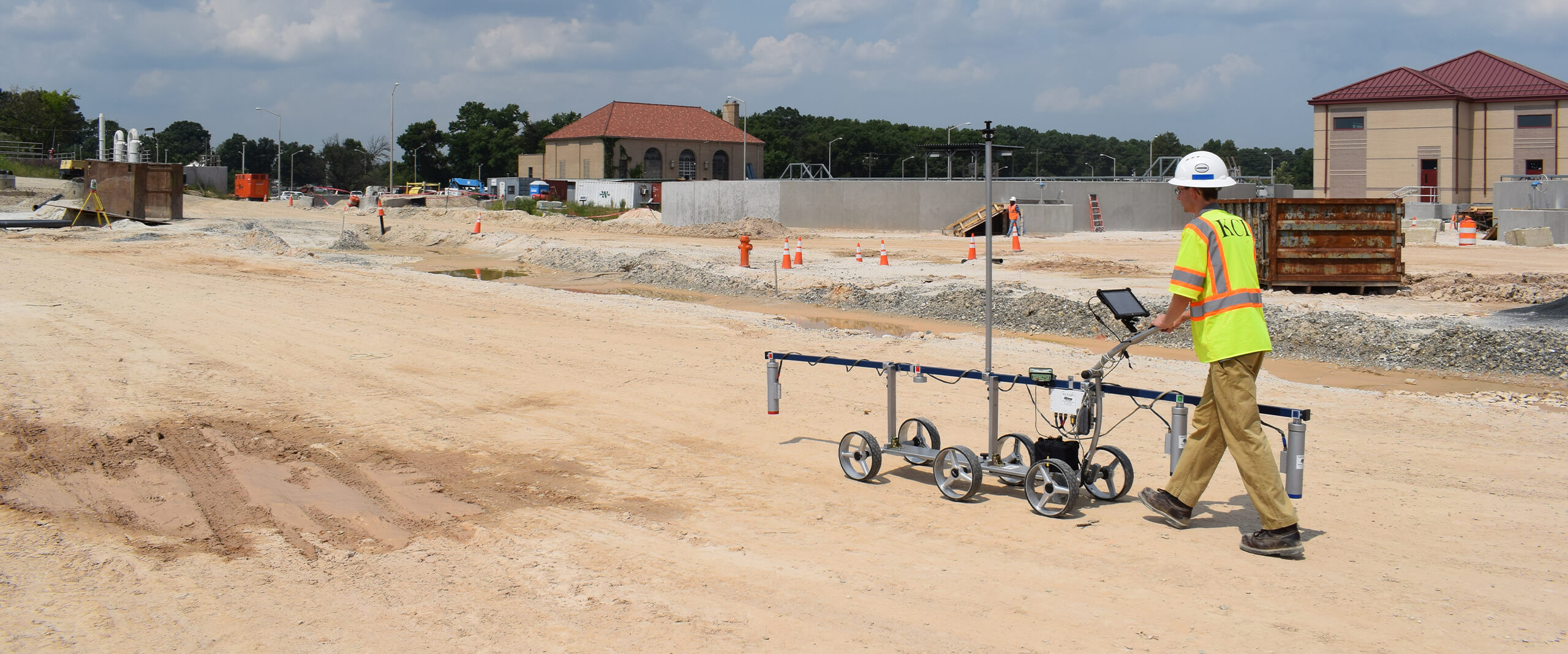Just How Geo Tech Engineers Can Address Common Dirt Issues in Urban Growth
Wiki Article
The Importance of Soil Analysis and Site Investigation in the Geotechnical Market: Ensuring Safety And Security and Stability in Civil Design
In the geotechnical industry, soil evaluation and site investigation are fundamental elements that underpin the safety and stability of civil design tasks. By thoroughly comprehending dirt properties, engineers can preemptively address possible difficulties, ultimately securing architectural stability.Understanding Soil Residences
In the world of geotechnical engineering, a detailed understanding of soil residential or commercial properties is extremely important for notified decision-making and reliable task design. The characterization of soil involves the assessment of numerous physical and mechanical residential or commercial properties, such as grain dimension distribution, plasticity, cohesion, shear, and permeability strength. These properties determine how soil behaves under different loading problems and environmental influences, making them essential for examining site viability for building projects.Soil classification systems, such as the Unified Dirt Classification System (USCS) and the AASHTO classification, provide frameworks for grouping soils based upon their characteristics. This classification aids engineers in forecasting behavior under stress and anxiety, water flow, and negotiation, therefore affecting design selections and building techniques.
Additionally, the interaction between soil and surrounding structures is a vital factor to consider in geotechnical design. Recognizing dirt properties aids recognize prospective difficulties, such as liquefaction in earthquake-prone locations or extreme settlement in soft dirts. By extensively evaluating these homes, geotechnical engineers can guarantee the safety, stability, and long life of frameworks, eventually adding to the total strength of civil design projects.
Methods of Soil Analysis

In-situ examinations consist of methods such as Conventional Penetration Tests (SPT), Cone Penetration Examinations (CPT), and vane shear tests. SPT examines the resistance of soil to penetration, supplying data on thickness and strength, while CPT measures dirt resistance and pore stress, yielding continuous profiles of dirt stratigraphy. Vane shear examinations are specifically useful for assessing the shear strength of cohesive dirts.
Research laboratory examinations match these in-situ analyses and include sampling dirt for controlled screening. Usual lab approaches include Atterberg restrictions, which establish the plasticity attributes of fine-grained dirts, and compaction tests, which examine moisture-density relationships. Added tests, such as triaxial compression and unconfined compression examinations, are carried out to evaluate the shear strength of dirt examples under numerous conditions.
Role of Site Investigation
Site investigation plays a critical role in the geotechnical engineering procedure, functioning as the structure for understanding subsurface problems. This comprehensive analysis includes systematic expedition of soil and rock buildings, groundwater levels, and various other geological attributes that affect job security and stability.Typically, site investigations include a variety of strategies, consisting of drilling boreholes, tasting, and in-situ testing. These techniques offer essential data on the physical and mechanical characteristics of the ground, informing engineers about possible challenges such as soil settlement, bearing ability, and slope security.
Additionally, site examination helps with the recognition of hazardous materials and pollutants, making it possible for the execution of proper removal procedures. By developing an exact subsurface account, website examinations assist to alleviate dangers related to building and construction, making certain that tasks follow safety and security standards and regulations.
The searchings for from a comprehensive website investigation not only overview layout decisions however additionally influence building techniques and timelines. In summary, the significance of site examination can not be overstated; it is a necessary action in the geotechnical engineering procedure, laying the groundwork for successful job execution while prioritizing public safety and security and ecological honesty.
Influence On Task Style
A thorough understanding of soil features substantially influences task style in the geotechnical market. Soil evaluation informs designers regarding the mechanical properties, make-up, and behavior of the ground, which are critical variables in identifying the usefulness and safety and security of a building job. Precise information on dirt stamina, compressibility, and permeability allow for the growth of efficient foundation layouts, guaranteeing that frameworks are appropriately supported and secure throughout their life expectancy.Moreover, the existence of contaminants or unpredictable dirt layers can prompt adjustments in project style, such as picking alternate building and construction approaches or materials. This aggressive method decreases threats connected to soil settlement, too much loading, or lateral activity, hence securing both the stability of the framework and public safety and security.
The integration of soil evaluation into job layout also facilitates conformity with regulatory requirements and ecological factors to consider. By resolving soil-related challenges early in the style procedure, designers can maximize resource allotment and lower possible delays and costs connected with unexpected website problems. Ultimately, complete dirt analysis enhances the overall high quality and longevity of civil engineering projects, resulting in more durable and lasting framework.
Case Studies and Examples
Demonstrating the critical role of soil analysis in the geotechnical industry, various case studies highlight its effect on project outcomes. One notable example is the construction of a skyscraper in midtown Los Angeles, where substantial dirt screening exposed unsteady subsurface conditions. engineer of record. By identifying the visibility of expansive clay, designers had the ability to revamp the foundation, including deep pilings that made sure stability and safety, ultimately protecting against possible architectural failures
Lastly, a dam project in the Southeast encountered hold-ups as a result of unanticipated dirt erosion issues. Detailed soil analysis permitted designers to carry out effective stablizing methods, guaranteeing that the dam met safety and security policies while adhering to the project timeline. These instances highlight the necessity of thorough dirt evaluation and site examination, highlighting their necessary role in attaining secure and effective civil engineering tasks.
Final Thought
Finally, dirt analysis and site examination are basic parts of the geotechnical industry, playing a crucial duty in guaranteeing the safety and security and stability of civil design projects. By supplying important information on soil residential properties and subsurface conditions, these procedures inform foundation layout and construction methods. Additionally, complete examinations contribute to danger recognition and risk reduction, inevitably boosting the longevity and toughness of frameworks while optimizing resource allowance throughout the task consulting engineer lifecycle.In the geotechnical sector, soil evaluation and site investigation are foundational components that underpin the safety and security and security of civil design projects. Understanding dirt buildings assists recognize possible difficulties, such as liquefaction in earthquake-prone areas or extreme settlement in soft soils. SPT assesses the resistance of soil to infiltration, offering data on density and strength, while CPT determines dirt resistance and pore stress, producing continual accounts of dirt stratigraphy. These instances underscore the necessity of extensive soil analysis and site investigation, highlighting their necessary duty in attaining secure and effective civil design jobs.
In verdict, dirt evaluation and website investigation are essential components of the geotechnical industry, playing a vital function in making sure the security and stability of civil engineering projects.
Report this wiki page